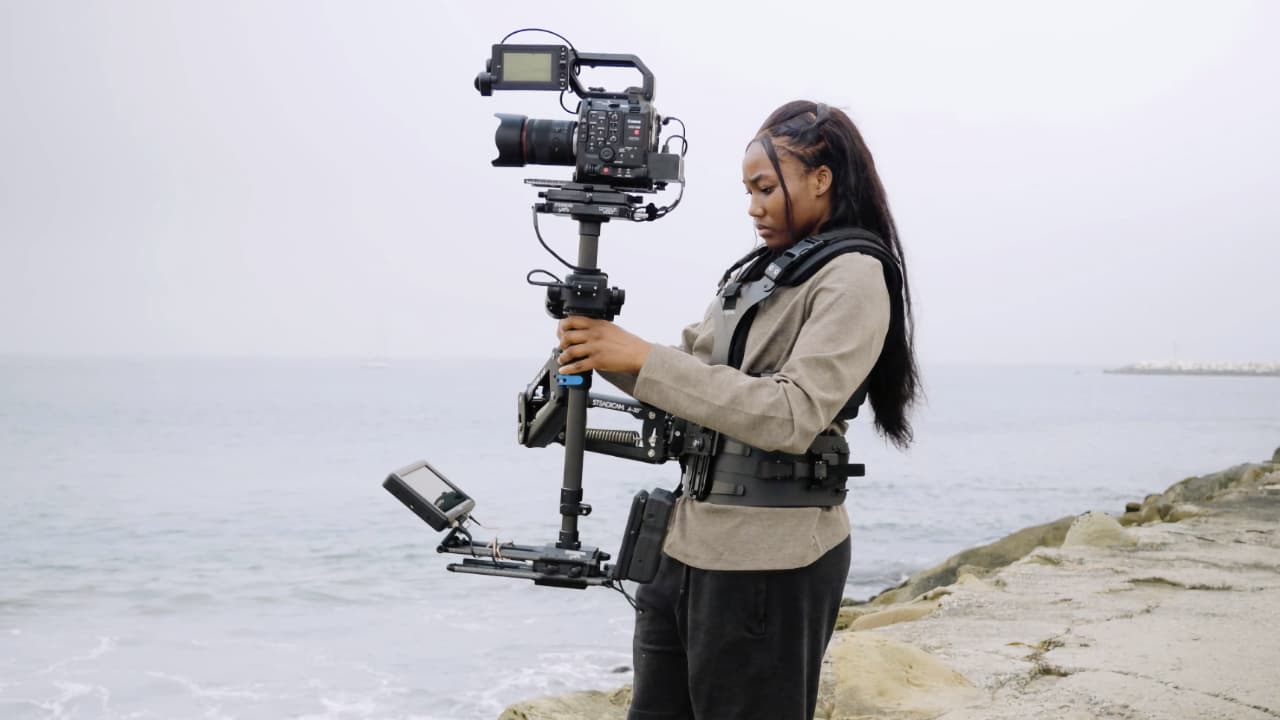
Phil Rhodes continues his look ahead at IBC2024 with a piece that starts off with Steadicam and ends up on Software Defined Radio by way of DJI.
Humans like to build machines to do things for them. That idea interacts interestingly with the arts, given the tendency of technology to skyrocket in performance while the fundamentals of things like film production change much less quickly. As such, shows like the upcoming IBC are sometimes temples to the idea that a sort of creeping computerisation which sometimes moves innovation from hardware to software.
Consider, for instance, all the things which have happened to Steadicam recently, besides the fiftieth anniversary of the design. Steadicam has long been a great example of a design which creates exactly the sort of craft that encourages people to aim for virtuoso proficiency.
Then there were gimbals.
Looking ahead to IBC2024
Anyone incautious enough to compare Steadicams with gimbals risks attracting the wrath of people inclined toward either one, though there’s inevitably a certain amount of crossover. Steadicam could be called an inertial, passively-stabilised device. Conversely, gimbals enjoy the sort of rock solidity that comes from electronic automation, though framing can feel a little laggy. The Steadicam Volt system added motors to the gimbal of a conventional inertial stabiliser, ideally unifying the best of both worlds.
The first Volt stabilised only the tilt and yaw axes, easing the levelling considerations associated with cornering. The most recent design adds the third axis, electronically equalising the inertia of the usually-lightweight pan axis with respect to the tilt and yaw.
Volt first emerged on big-ticket M-series options. As such, we might have assumed that it would remain the preserve of the high end, though the new Steadicam Axis is advertised on Tiffen’s site at a comparatively frugal $8995 for vest, arm and sled; it’s appeared at CVP’s London showroom of late, and IBC showgoers might take the opportunity to try it out. It is, in your correspondent’s trained but unpracticed opinion, Steadicam made easy. Or at least easier.
Given DJI’s history in stabilisation, it’s instinctive to wonder what the company has up its sleeve - though pre-show press releases seem most keen to talk about the new SDR addition to the Transmission range of video and control transceivers (seriously, this category of device needs a name). Software-defined radio is a pretty general term, but it implies that the work of encoding and decoding the demodulated radio signal is being done by a CPU running code, as opposed to an application-specific chip.

That’s good, inasmuch as it means the radio hardware is easier to repurpose with firmware, and as such it’s no surprise to find that the new SDR Transmission has more flexibility than the competition in terms of what it can transmit, how many receivers it can simultaneously address, and so on. How much difference this makes will depend on what new applications become available long term. Maximising potential will require constant work on firmware, but the potential is huge.
The situation should put us in mind of the late, great Convergent Design monitors, since replaced by the Ovide Koko, which could be called software-defined monitors and were made great by the company’s dedication to software support. It’s a natural consequence of technological advancement rocketing past the demands of the industry, and it changes the way the world works for companies which build electronic devices.
Atomos, for instance, once announced, with commendable frankness, that the world did not necessarily need hardware more capable than its 8K incarnation (what happened to the company’s Sapphire 8K sensor, announced in 2022, is another matter).
Still, none of this necessarily changes things for companies which make stands, clamps, flags, and all the other apparently-prosaic things which help us make the world look like we want it to. While film and TV requires us to interact with the real world, that sort of thing will always be of core importance, and we’ll look at some interesting new ideas next time.
Tags: Production Steadicam Atomos DJI IBC2024


Comments